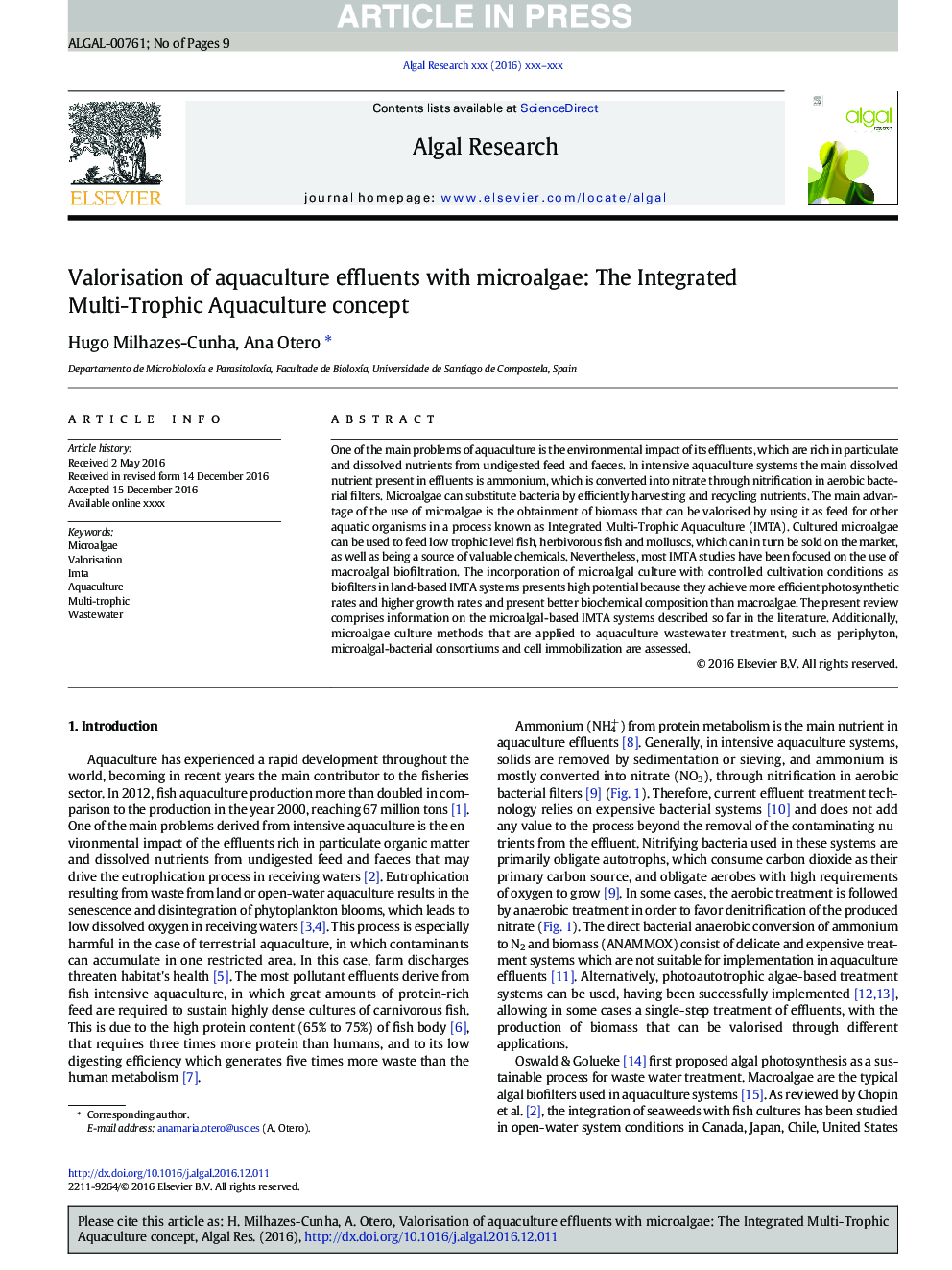| Article ID | Journal | Published Year | Pages | File Type |
|---|---|---|---|---|
| 5478248 | Algal Research | 2017 | 9 Pages |
Abstract
One of the main problems of aquaculture is the environmental impact of its effluents, which are rich in particulate and dissolved nutrients from undigested feed and faeces. In intensive aquaculture systems the main dissolved nutrient present in effluents is ammonium, which is converted into nitrate through nitrification in aerobic bacterial filters. Microalgae can substitute bacteria by efficiently harvesting and recycling nutrients. The main advantage of the use of microalgae is the obtainment of biomass that can be valorised by using it as feed for other aquatic organisms in a process known as Integrated Multi-Trophic Aquaculture (IMTA). Cultured microalgae can be used to feed low trophic level fish, herbivorous fish and molluscs, which can in turn be sold on the market, as well as being a source of valuable chemicals. Nevertheless, most IMTA studies have been focused on the use of macroalgal biofiltration. The incorporation of microalgal culture with controlled cultivation conditions as biofilters in land-based IMTA systems presents high potential because they achieve more efficient photosynthetic rates and higher growth rates and present better biochemical composition than macroalgae. The present review comprises information on the microalgal-based IMTA systems described so far in the literature. Additionally, microalgae culture methods that are applied to aquaculture wastewater treatment, such as periphyton, microalgal-bacterial consortiums and cell immobilization are assessed.
Related Topics
Physical Sciences and Engineering
Energy
Renewable Energy, Sustainability and the Environment
Authors
Hugo Milhazes-Cunha, Ana Otero,
